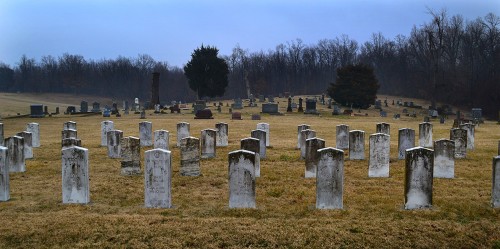 Whenever visitors come to town, I drag them down to the Stoddard County Confederate Memorial in Bloomfield. The unique thing about this memorial is each stone tells how the soldier died.
Whenever visitors come to town, I drag them down to the Stoddard County Confederate Memorial in Bloomfield. The unique thing about this memorial is each stone tells how the soldier died.
Veterans Day is be a good time to examine the plight of a Stoddard county soldier who came to a sad end. In a way, it tells a lot about how the Civil War was fought in Missouri. For more detail, go to The Asa Ladd Story. It’s worth a read.
Asa Valentine Ladd
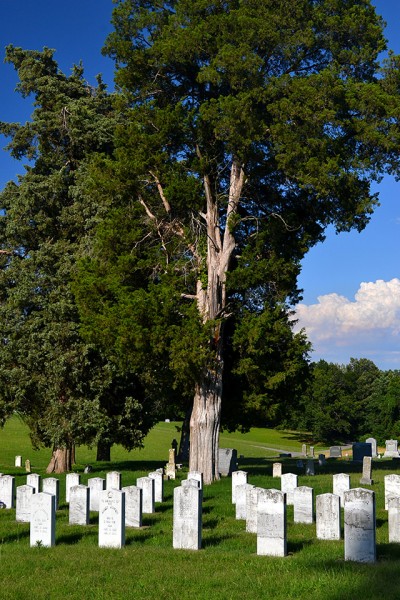 Asa Valentine Ladd, a farmer, enlisted in the Confederate army March 10, 1861, in Stoddard County. He took with him two horses and left behind a wife, Amy, and seven children. He served a mostly undistinguished military career and was involved in no general engagements. He was captured in Sedalia Oct. 16, 1864.
Asa Valentine Ladd, a farmer, enlisted in the Confederate army March 10, 1861, in Stoddard County. He took with him two horses and left behind a wife, Amy, and seven children. He served a mostly undistinguished military career and was involved in no general engagements. He was captured in Sedalia Oct. 16, 1864.
In a separate fight – The Battle of Pilot Knob, near Bloomfield in September 1864 – and having no connection with Pvt. Ladd, a Union Major, James Wilson and six of his men were captured by the Confederates. They were turned over to CSA Major Tim Reeves, called a guerrilla by the Union Forces. It has never been determined who gave the order, but Major Wilson was taken out and hung and his men were shot. When word of this murder reached Gen. Rosecrans, who was commanding the Department of the Missouri, he issued a retaliatory order to the effect that a Major and six enlisted men of the Rebel captives be shot.
Men were forced to draw lots
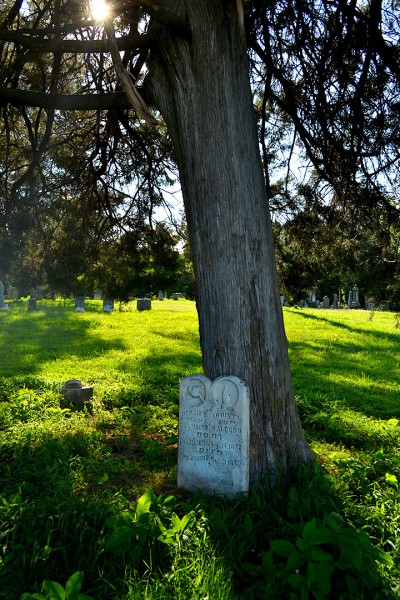 Prisoners were given the option to take the Oath of Allegiance to the Federal Government. Those who complied were paroled. Those who refused, including Pvt. Ladd, were marched into a room where they drew lots. A container of black and white marbles was held above eye level and the men were told to take a marble. Six black marbles meant death; a white marble won the soldier a parole. Pvt. Ladd drew a black marble.
Prisoners were given the option to take the Oath of Allegiance to the Federal Government. Those who complied were paroled. Those who refused, including Pvt. Ladd, were marched into a room where they drew lots. A container of black and white marbles was held above eye level and the men were told to take a marble. Six black marbles meant death; a white marble won the soldier a parole. Pvt. Ladd drew a black marble.
Letter to his wife
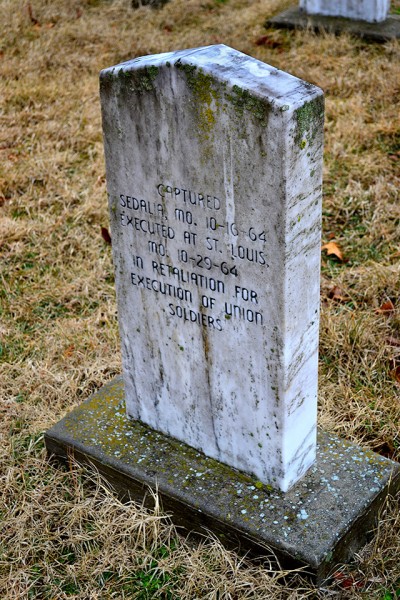 Pvt. Ladd wrote this moving letter in the last hours of his life:
Pvt. Ladd wrote this moving letter in the last hours of his life:
Dear Wife and Children:
I take my pen with trembling hand to inform you that I will be shot between 2 and 4 o’clock this evening.I have but a few hours to remain in this unfriendly world. There is six of us sentenced to die because of the six Union soldiers that were shot by Reeve’s men. My dear wife, don’t grieve for me.I want you to meet me in Heaven. I want you to teach the children piety, so that they may meet me at the right hand of God.I can’t tell you my feelings but you can form some idea of my feelings when you hear of my fate.I don’t want you to let this bear on your mind anymore than you can help, for you are now left to take care of my dear children. Tell them to remember their dear father. I want you to tell my friends that I have gone home to rest.
I want you to go to Mr. Connor and tell him to assist you in winding up your business. If he is not there, get Mr Cleveland. If you don’t get this letter before St. Francis River gets up, you had better stay there until you can make a crop, and you can go in the dry season. It is now past 4 a.m. I must bring my letter to a close, leaving you in the hands of God. I send you my best love and respects in the hour of death. Kiss all the children for me. You need have no uneasiness about my future state, for my faith is well founded…
Good-by Amy,
Acey Ladd
She never got the letter
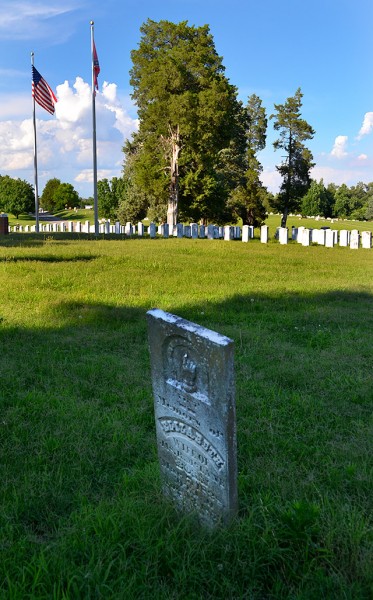 Amy, it is said, never got the letter, particularly the part that warned her to wait out high waters on the St. Francis River. She loaded two wagons, hitched up the oxen to them and hired a man to drive one while she drove the other. One of the wagons tipped over crossing the flooding river and all its cargo, including the family Bible, was washed away. She ended up raising her children in Arkansas without ever seeing her husband’s last words.
Amy, it is said, never got the letter, particularly the part that warned her to wait out high waters on the St. Francis River. She loaded two wagons, hitched up the oxen to them and hired a man to drive one while she drove the other. One of the wagons tipped over crossing the flooding river and all its cargo, including the family Bible, was washed away. She ended up raising her children in Arkansas without ever seeing her husband’s last words.
A man who deserved killing
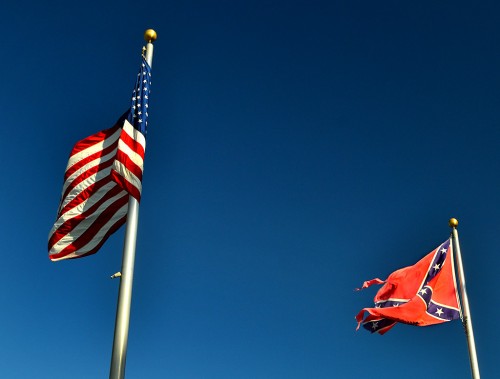 It’s easy to paint the confederate Major Reeves as the bad guy in this story, but the Major James Wilson he killed, according to some accounts, was “a heartless Union officer with a take no prisoner policy. He and his troops rode into Ripley Co. on Chrismas day of 1863 and killed 35 solders and 62 civilians, some as young as 12 months old, while they were eating Christmas dinner.”
It’s easy to paint the confederate Major Reeves as the bad guy in this story, but the Major James Wilson he killed, according to some accounts, was “a heartless Union officer with a take no prisoner policy. He and his troops rode into Ripley Co. on Chrismas day of 1863 and killed 35 solders and 62 civilians, some as young as 12 months old, while they were eating Christmas dinner.”
From the book Shelby and His Men: “The execution of Major Wilson at Pilot Knob was an act of eminent justice, for he was a common murderer, and entirely destitute of manly and soldierly feeling.”
Rank has privileges
What happened to Major E.O. Wolf who was supposed to be shot along with the other five soldiers? He received a stay of execution.
John M. Ferguson, who had drawn a fatal black marble, was determined to have been a teamster and had served as a soldier only a short period of time. His name was stricken from the roll of death to be replaced by George F. Bunch. Ferguson, it was said, “was so rejoiced and grateful at this unexpected deliverance, that he shed tears and declared that hereafter he would fight only for the Union.”
Charles W. Minniken asked to say a few words before the sentence was carried out: “Soldiers, and all of you who hear me, take warning from me. I have been a Confederate soldier four years, and I have served my country faithfully. I am now to be shot for what other men have done, that I had no hand in, and know nothing about. I never was a guerilla, and I am sorry to be shot for what I had nothing to do with, and that I am not guilty of. When I took a prisoner I always treated him kindly and never harmed a man after he surrendered. I hope God will take me to his bosom when I am dead. 0, Lord be with me!” While a sergeant was tying his blindfold, Minniken said: “Sergeant, I don’t blame you. I hope we will meet in heaven. Boys, when you kill me, kill me dead.”
And, that was the messy way the Civil War was fought in Missouri. As Jim Denny wrote in The War Within the State, “Missourians did not have to await the arrival of an invading army to begin making war – they just chose sides and began fighting each other.”

Wow! This is a powerful story, Ken, and so fitting to tell on Veteran’s Day!
I like to walk through the Confederate Cemetery at Bloomfield and read the back of each tombstone, where it tells how each soldier died. Such a horrible war!
As a contributor to our Civil War roundtable in St Charles County, I can tell you it was not a good time to live in Missouri whether you were federal, confederate or neither. This soldier, Pvt Ladd was only one of many shot by both sides after capture, it was no gentleman’s war in Missouri! I am currently reading a book I obtained from the library entitled “A Tour Guide To Missouri’s Civil War”. It is a sesquicentennial driver’s guide to all the Civil War battlefields and sites in Missouri. You would be surprised what may have happened in your Missouri neighborhood!
About the Civl War in Missouri: Asa’s family was a divided family. He, his brother ,William, cousin, M.J Norman and brother-in-law, Ira Broadus Gaines were Confederate soldiers. His brothers-in law, John Allen and Pleasant Philip Walker Majors were Union. When I visited in the early eighties, the war was still going on!!
GOD Bless Missouri
Bill’s right. My father’s family lived in central Missouri at the time of the Civil War. Toward the end of the war raiders (probably guerillas with southern sympathies) rode up to my great-grandmother-to-be’s house shouting out for her brother Jim. Jim was nearly old enough to enlist. His next old brother John had recently joined the Union forces in St. Louis. The raiders were known for burning houses and for killing adult males favoring the other side in the conflict. The family knew this and helped Jim escape. The house could not be saved. It was burned to the ground. The incredible irony of this is that two older brothers and their father were serving in the Confederate army and had been since the beginning of the war.
Great-grandfather Linus Sanford and several others, all innocent civilians, were captured in Jackson, sentenced to die if the “murderers” of some Union troops did not surrender. They were imprisoned in the basement of the Cape Girardeau courthouse to await execution which was to come because the guilty parties of course did not surrender.
Fortunately a new Union Army unit rode into Cape, took over the administration of the town, became responsible to carry out the executions but luckily included some Harvard classmates of great-grandfather. As we say in the Vandivort family, there was a class reunion instead of an execution. However, he was kept in that dungeon for so long that my grandmother told me he was physically broken and his health was never again the same.
The war in Missouri was horrible compared to what is more commonly reported, the war as it was fought in the east. Missouri’s war years compare to what we saw in Sarajevo and Bosnia a few years ago — murder, theft, rape, ethnic cleansing, killing of innocent civilians, starvation, etc. People in most of the country today have no idea what happened in Missouri since it is rarely reported in history books or school texts.
Asa V. “Acey” Ladd is actually buried at Jefferson Barracks National Cemetery, just south of St. Louis:
http://www.findagrave.com/cgi-bin/fg.cgi?page=gr&GRid=19380
I saw that in the research. Next time I get to St. Louis, I may try to look him up. Thanks.
How did we come to know about the letter?
There was a copy of it on display at the Stoddard County Confederate Memorial Cemetery. When I got back to Cape, I did some Google searches and came up with the rest of the info. The link for a lot more details is at the top of the page.
Recently visited the memorial site. This is a great monument to the building a nation. ( The leaders of that time would most likely roll over if they could see what is happening with the situation we now have.)
I visited once before, a few years ago. At that time noticed that the condition of the U.S. flag was in poor shape. Didn’t realize during that visit that a flag pole existed for the Confederate Flag. Now the U.S. Flag is in good shape. However, there is a Confederate Flag now on the other flagpole that is disrespectful to those who served. I would be interested to know how the fund to maintain this memorial is solicited.
Asa Ladd was my great, great grandfather. Some of the details above are not altogether accurate but they are close enough.
Asa and Amy did have 7 childr4en but one of them, Francis Ransom, died in 1863. At this time Asa went awol to aid his family. During this time his seventh child was conceived. He returned to the army after Jefferson Davis issued an ultimatum stating that all deserters and/ or harborers of deserters would be shot unless they returned to their units. Asa returned.
About Enoch Wolf: At the time Asa, et.al. were executed,Gratiot Stree Prison did not have a major in captivity so they had to wait until on4e was captured. Enoch Wolf’s jailor was a Mason as was Enoch who was able to get a telegram sent to Presi
dent Lincoln who ordered William Chandler, the general in charge of the Western front to stop his retaliation policies. Enoch Wolf spent the remainder of the war on Johnson’s Island which was located in Lake Erie.
After the war, he became the sheriff of Fulton County, Arkansas, which is where Asa’s widow and her family also lived.
How did we know about the letter? Actually there were two letters. The original to his wife was owned by one of Asa’s daughters. It has been published many times over the years. The original written to Asa’s father, Ransom Ladd, is still in existance and is owned by one of my cousins.
I have researched this family for over fifty years. I am honored to be a part of it.
Correcton: The commander of the Western Front was William Rosecrans not William Chandler.
Please get in touch with me about Any information about Ransom. He is my great great grandfather I would love to find more of my family members
He too was my great. Great. Grandfather.
My mothers father (my grandfather) was Lee Wayne Ladd.
I have just read about this story, it breaks my heart to read it.
Asa Ladd was my great,great grandfather. Some of the information written above is not totally accurate but close enough.
Asa and Amy Gaines Ladd did have seven children but one died in 1863. At this time Asa went AWOL which I assume was to help Amy. It was during this time that Jefferson Davis issued an ultimatum stating that all deserters should return to their units or face death. Asa returned to the Confederate Army. His seventh child was conceived during this time.
About Enoch Wolf(e): At the time of Asa’a execution, there were no majors in Gratiot Street Prison. So the officials had ro wait until one was captured. Enoch’s jailor was a Mason as was Enoch. This tie superceded wartime rifts. A telegram was sent to President Lincoln who rescinded all retaliation policies. Wolf spent the remainder of the war on Johnson’s Island which was located in Lake Erie. He ended up being the sheriff of Fulton County, Arkansas, which is where Asa’s family also lived.
How do we know about the letters? There were actually two letters–one written to Amy and one to his father. After the war was over, Ransom Ladd (Asa’s father) went to St. Louis to retrieve Asa’s belongings; the letters were there; they were never mailed. For many years the original letter to Amy was kept in one of Asa’s daughter’s families. Only the text remains. The other one–the one to his father-still exists. It belongs to one of my cousins. Both letters have been published many times and now seem to be part of public domain.
I have researched this family for over fifty years; I must say that I am honored to be a part of it
No problem. The site has a quirk: sometimes you have to hit Ctrl-F5 to refresh your browser to see new content.
You’re welcome to post information this interesting a third time. Thanks for sharing.
Is there any way that I could receive a digital photo of those letters? Thank you! G-G-G-G-grandson William Norman bnorman@keelerwebb.com
Laverne, I am also Asa Ladds great, great grandfather. My father Howard Doyle Horton was the grandson of Rachel Ladd, Asa’s daughter. I grew up in Bald Knob, Ar.
Well, it looks like this message is printed twice!!! Sorry folks.
Major Wolfe was my great great grandfather. While imprisoned he carved a Masonic ring from a piece he cut from his cane. That wooden ring is at the Library and Museum of the Grand Lodge of Oklahoma.
Major Wolf was also my great great grandfather.
asa ladd was also my great great grandfather. my grandmother was roseann alice ladd, daughter of william burke ladd. she married thomas a coy. she was called maw coy by all of us and alice or aunt alice by her nieces and nephews. she had a letter signed by asa ladd. i don.t know if it was the original. i don’t know what happened to the letter. growing up i was aalways asking her about our ancestors and she obliged by telling me lots of stories she had been told by her father. i would certainly like to hear from anyone from the ladd family. i am very proud of the ladd history and thoroughly enjoy the members of the family that i do know.
Ken,
I have a book that will be coming out soon that focuses on “The Wilson Massacre”
Katherine Ladd Wilson Gray: Send me your e-mail address and I will invite you to see the Ladd Family History located on Ancestry.Com
My e-mail is lavpapworth@aol.com
There is now a bronze memorial plaque for Ladd at the Stoddard County courthouse.
Hi everyone. Asa is also my GG Grandfather on my fathers side. My father was Harold Gaylon Ladd. I love to read all the history our family has lived through.
Hello everyone.. I too am a descendant of Asa and Amy. I am their ggg-grandson. My gg-grandparents were William Burke Ladd and Mary Ann Patience Reavis.. great gps were James Monroe “Judge” Ladd and Margaret Elizabeth Prewitt.. grandparents were Geneva Laverne Ladd and SSgt. Wallace Howard Cleveland.. parents are Candace Ann Cleveland and SSgt. Charles William Martin, Jr.
I visited Asa’s gravesite at Jefferson Barracks two days ago while I was in town for a funeral of another descendant of his.. my mother’s 1st cousin, Melba JoAnn Murray LaVanchy (5/20/1935 – 5/20/2017). She was his gg- granddaughter and lived literally right across the street from Jefferson Barracks and is now buried not far from there.
Chris Martin
Memphis, TN
Hello everyone! Asa’s ggg-grandson on my mother’s side here.. her mother was Geneva Laverne Ladd, daughter of James Monroe “Judge” Ladd, son of William Burke Ladd, son of Asa.
I visited Asa’s grave In Lemay, MO a couple of days ago when I was in town for a funeral for another one of his descendants, his gg-granddaughter, Melba JoAnn Murray LaVanchy (5/20/1935 – 5/20/2017). She was my mother’s first cousin and literally lived right across the street from Jefferson Barracks. She is now buried in a cemetery near there next to her sisters, Betty Jean Murray Beirsinger (1929 – 1952) and Doris Alfredia Murray Murphy (1928 – 2012). Asa also has a great granddaughter buried just a few yards from his grave at JB.. my grandmother’s sister, Snowdie Belle Ladd Byrd (1910 – 1962), who is buried underneath her WW2 veteran husband, TCpl. Lester R. Byrd
Chris Martin
Memphis, TN
Asa Ladd was my first cousin on Mother’s side.
Hello, I am Asa Ladd’s great-great-great-great granddaughter through Maudie Ann Ladd Burdyshaw, Asa’s great-granddaughter. To all my extended family out there, a warm hello! If there is a copy of the letter out there I would love to have a scanned version if possible. Contact me at hoke.candice@gmail.com
My husband and I just visited Asa’s grave this week when passing through near Jefferson Barracks. I had received a copy of this story from my uncle. Asa was my great-great-great-grandfather. My grandfather was William Marvin Ladd. Such a sweet sad story in his letter to his wife. I didn’t know she never received it.